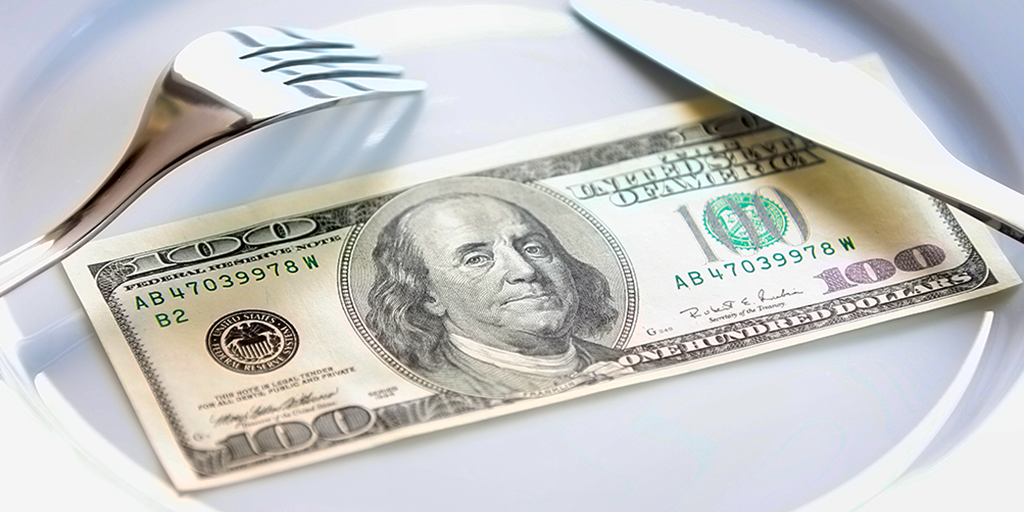It can’t be denied that the “foodie culture” has a significant influence on restaurants, but there is another force that has more consistently shaped the industry: the economy. In fact, restaurants wouldn’t exist if it weren’t for economic and political factors. The world’s first restaurants popped up in 18th century Paris when servants, newly unemployed in the wake of the French Revolution, found use for their skills.
For American restaurants today, the economy still plays a major role in industry trends, as wholesale food costs rise and employment stabilizes. According to the National Restaurant Association’s performance index, these are the top challenges restaurant operators report facing, with 18 percent reporting government and 17 percent reporting food costs. Wholesale food prices grew 3.6 percent from 2004-2014, but menu prices only grew 2.9 percent during that same period. In order to stay competitive but stabilize food costs, restaurant operators need to become more productive and efficient.
Also in the past decade, the national employment rate grew 0.5 percent nationally but 2 percent within the restaurant industry. 14 million people are currently employed in the U.S. restaurant industry, which is about 10 percent of working Americans. With hot button issues like health care and minimum wage affecting labor costs, this is also impacting the need for restaurant operations to be more efficient. 12 percent of restaurant operators have also reported recruitment and retention of employees as their top challenge.
Despite these economic challenges, the restaurant industry has seen significant growth in the past year alone with sales predicted to post a yearly record high $709 billion in 2015, which is 4 percent of the United States’ economic output. This 3.8 percent increase over last year’s restaurant sales means that 2015 is the sixth consecutive year of positive sales growth in the restaurant industry.
The National Restaurant Association reports that one of the key drivers for growth of the restaurant industry is the change in how Americans spend their money on food. In 1955, only 25 percent of American dollars spent on food was spent at restaurants. Today, the restaurant industry’s share of the American food dollar has risen to 47 percent and continues to grow.
Over the past 60 years, restaurants gained that significant food dollar share by adapting to consumer tastes and behaviors. As more Americans, particularly women, joined the workforce, there was less time for people to prepare their meals at home. The convenience of restaurants and higher disposable incomes thus translated into more money spent at restaurants in the U.S. However, with regions like New England and the Midwest currently seeing slower population and employment growth, restaurant operators should look at their local market to gauge how employment will affect their business.
A significant factor contributing to the growth of the restaurant industry over the past decade is the off-premises market, which includes takeout, delivery, drive thru, curbside, and mobile orders. As these options allow for even more convenience for hungry working Americans, 25 percent of all restaurant traffic is currently off premises. Therefore, restaurant operators need to consider how this market influences their business.
Other economic influences on the restaurant industry include gas prices and consumer debt. The decline of gas prices over the past year means that consumers have more cash they can spend at restaurants and are able to travel specifically to dine at restaurants. Conversely, consumer debt is starting to grow as mortgages and student loans eat into income, especially for Millennials, which limits the amount of money they can spend at restaurants.
While it’s natural for restaurant operators to see other restaurants as their competition, there are also other areas in which the economy forces restaurants to compete for consumer spend. Food costs account for 13 percent of all consumer spend, while housing and transportation make up 52 percent.
In order to help get more dollars to the food category while still factoring in these bigger consumer spend categories, the National Restaurant Association predicts that over the next decade, loyalty programs like those Rewards Network powers will connect more restaurant spending with other categories like transportation and education. This benefits the restaurant operators by putting more of the consumer dollar into their business, and it benefits consumers by providing discounts on their other necessary expenses.
If you need a cash infusion to help manage your restaurant business as the economy fluctuates, our restaurant financing programs can help.






